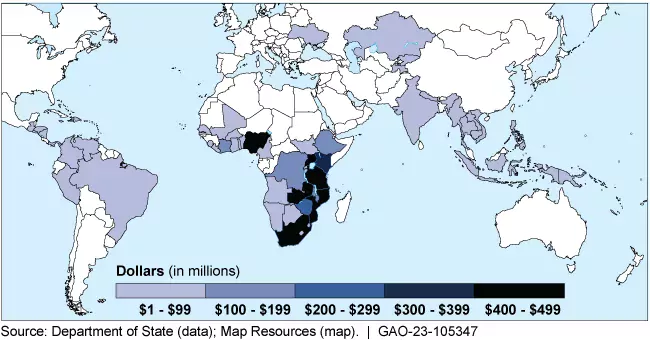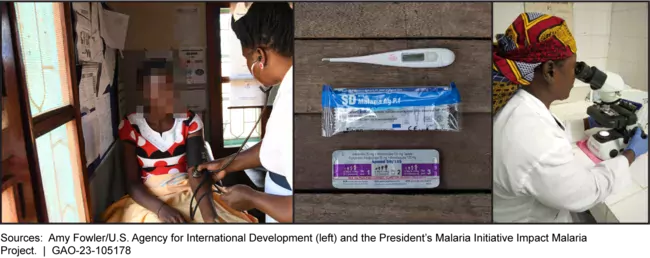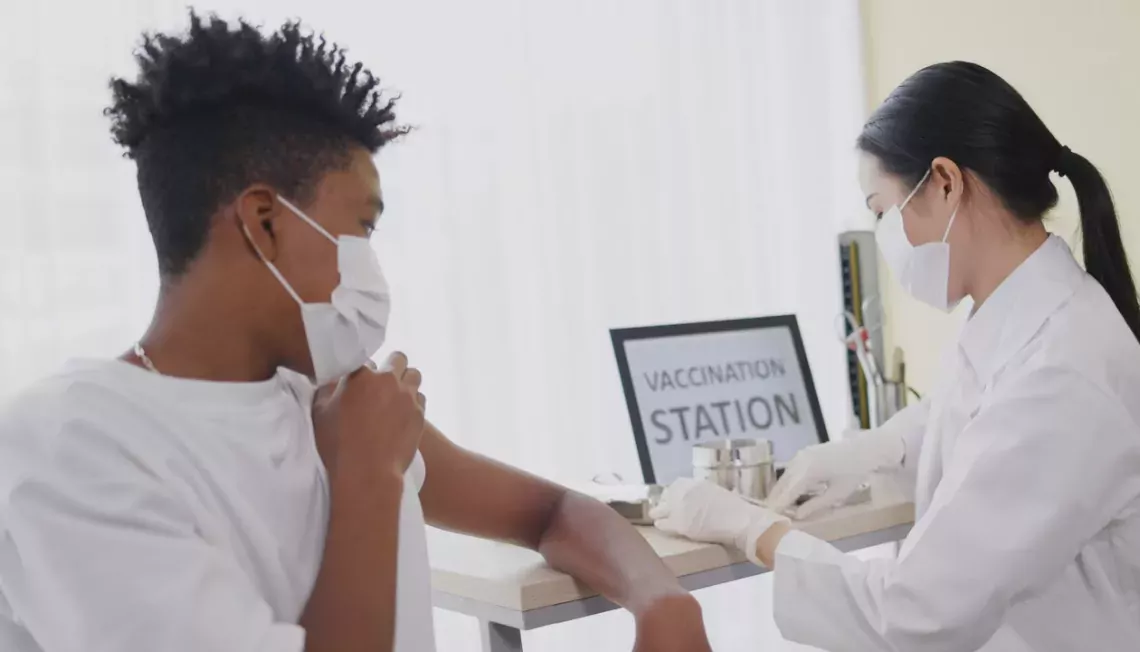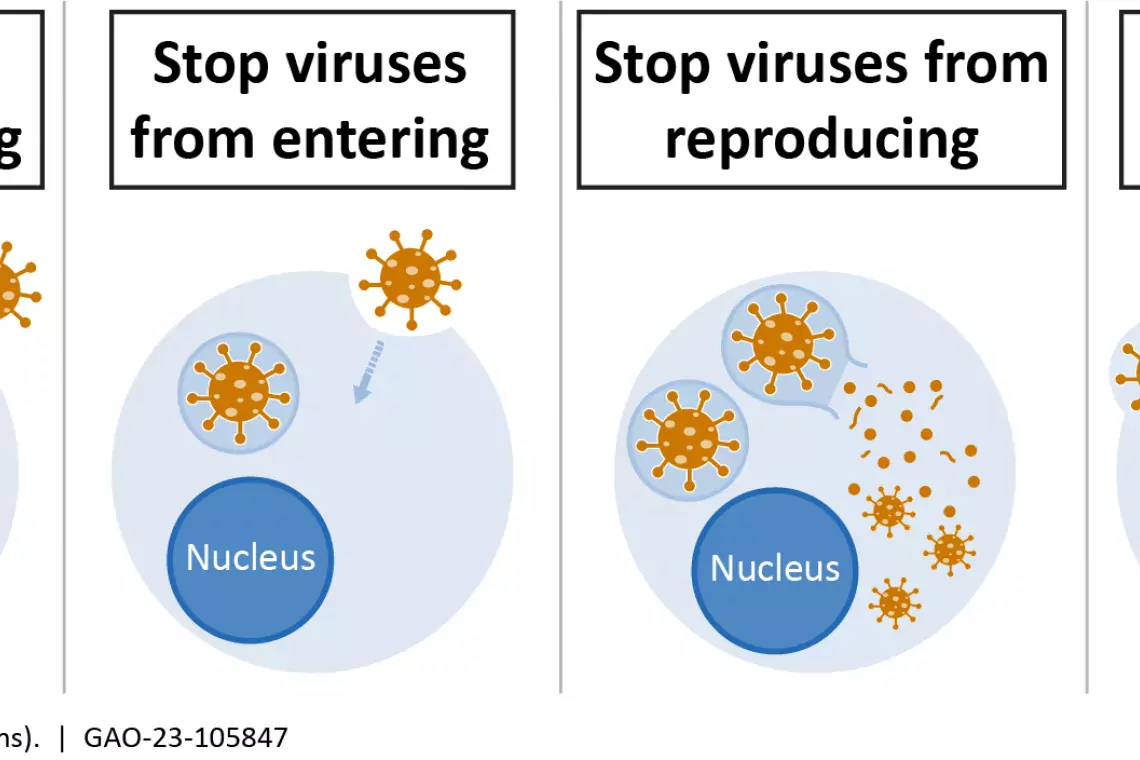For World Health Day (April 7), We Look At U.S. Efforts to Promote Global Wellness
When it comes to communicable diseases, it turns out, it is a small world after all. Serious diseases like COVID-19, AIDS, and mpox (previously known as monkeypox) can move quickly around the globe—threatening lives and livelihoods. The U.S. plays an important role in working with global partners to prevent the spread of diseases like these.
Today, for World Health Day (April 7), the WatchBlog looks at our recent work on key U.S. agencies’ efforts to prevent the spread of diseases and the challenges these efforts face.
USAID supported COVID-19 vaccinations in indigenous communities in Guatemala
Image

USAID’s Efforts to Increase COVID-19 Vaccination Rates
In response to the COVID-19 pandemic, the U.S. government pledged to help reach a global goal of vaccinating 70% of the world’s population against this disease. The U.S. Agency for International Development (USAID) obligated an estimated $904 million, as of March 2023, to help 125 countries prepare for and deliver vaccines.
For example, in Malawi, USAID assistance helped provide “cold chain” equipment needed to store vaccines at required temperatures. In South Africa, a USAID implementing partner created an app to show users the closest vaccination centers and the brands of vaccines offered there.
But, despite these efforts, as of July 2023 vaccination rates had not reached 50% in almost two-thirds of the countries where USAID provided assistance. USAID officials and those in countries assisted highlighted a number of challenges that contributed to not meeting the 70% goal. Some reported challenges such as misinformation and vaccine hesitancy. Others said there were shortages of trained health care workers to administer vaccines. And in some cases, it was difficult to reach remote locations to provide vaccines.
Our video below discusses some of these challenges and lessons learned. USAID officials told us they plan to share lessons learned from these issues to help its partners prepare for future pandemics.
Staffing challenges pre-date COVID-19 response. They were seen in global HIV/AIDS program
Even before COVID-19, there have been persistent staffing challenges in response to other global health crises—for example, HIV/AIDS.
Over the past two decades, the U.S. government has provided more than $100 billion through the President’s Emergency Plan for AIDS Relief (PEPFAR) program toward combating HIV infections and AIDS worldwide. The PEPFAR program has prevented millions of new HIV infections and saved more than 20 million lives in over 50 countries.
However, in our December 2022 report about the Department of State’s (State’s) management of this program, we found staff vacancies may hamper efforts. For example, 70% of PEPFAR headquarters positions are vacant and 89% of key overseas positions are vacant. This has led to workload and morale issues among PEPFAR staff. We also found longstanding coordination challenges between State’s headquarters and overseas officials. This too could hamper implementation of PEPFAR’s life-saving activities.
While State has taken actions to improve coordination, it has not identified and addressed the underlying causes of PEPFAR staffing vacancies. To learn more about State’s challenges in managing the PEPFAR program and our recommendations, read our report.
The President's Emergency Plan For AIDS Relief funded activities to combat HIV/AIDS in these countries in FY 2022
Image

The bigger picture
To meet the challenges of future global health crises, U.S. government agencies need the right number of staff with the right skills and leadership. This helps to foster a positive organizational culture and better positions U.S. efforts to respond quickly. USAID’s Bureau for Global Health manages crisis response and other efforts. But we found some similar challenges (to those discussed above) in the Bureau’s management.
Aligning resources with need. Of the Bureau’s three strategic priorities, the two receiving the most funding—preventing child and maternal deaths and combating infectious diseases—have far fewer staff working on them than the third, HIV/AIDS. We think the Bureau needs a workforce plan to better align staffing with funding and evaluate future staffing needs.
Leadership. Negative leadership behaviors without accountability have also been a persistent problem, according to Bureau officials. The Bureau has taken some initial steps to address these issues. But we think it needs a more comprehensive approach.
Learning from the past. We also found that the Bureau has not documented its lessons learned from COVID-19 and does not assess its performance at a bureau-wide level. Doing so is key to improving the response to global health emergencies.
Examples of Programming Funded by the Bureau for Global Health
Image

Learn more about our work on USAID’s Bureau for Global Health by reading our report.
- GAO’s fact-based, nonpartisan information helps Congress and federal agencies improve government. The WatchBlog lets us contextualize GAO’s work a little more for the public. Check out more of our posts at GAO.gov/blog.







